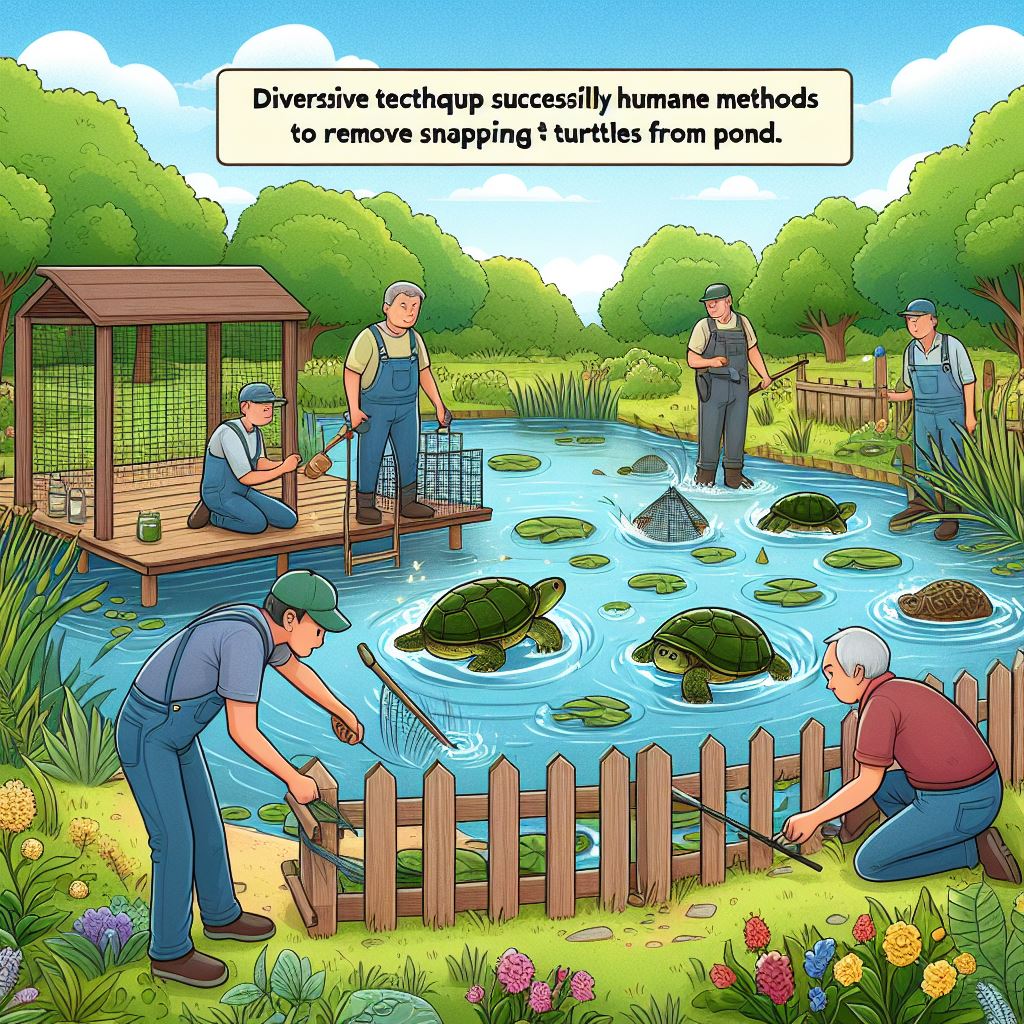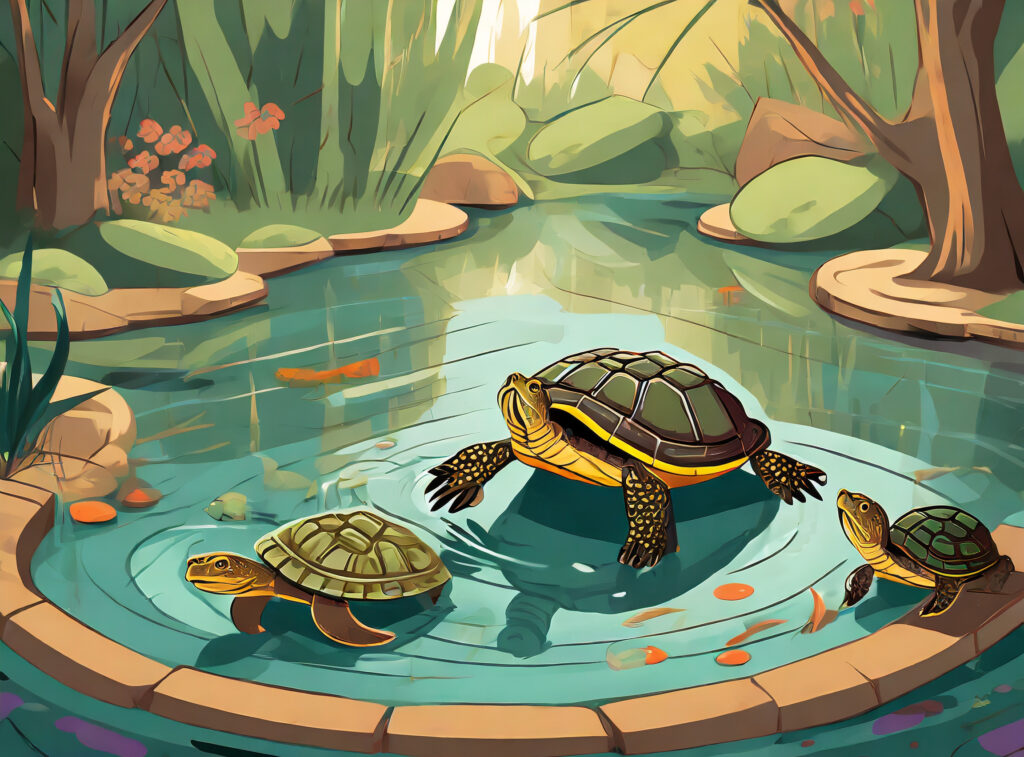Eradicating snapping turtles from your pond can be a daunting task, but with the right approach, it is certainly possible. These creatures can pose a threat to other wildlife in the pond and can even harm humans, especially small children and pets. It’s crucial to address the issue promptly to prevent any potential harm. Fortunately, there are several effective methods that can be employed to safely and legally remove these predators from your pond. By taking action, pond owners can restore the balance of their ecosystem and ensure the safety of their property and loved ones.
Identifying the Presence of Snapping Turtles
Assuming you suspect that snapping turtles have invaded your pond, it is crucial to confirm their presence before taking any action. Identifying the signs of a snapping turtle infestation can help you effectively tackle the issue and protect your pond’s ecosystem.

Physical Characteristics
Snapping turtles are easily recognizable due to their distinct physical features. They have large, muscular bodies, with dark-colored shells that can grow up to 20 inches in length. Their long necks and powerful jaws make them formidable predators in the water. Additionally, snapping turtles have spiked tails and webbed feet, which they use for swimming. If you spot a turtle resembling these characteristics in your pond, it is likely a snapping turtle.
Signs and Symptoms of Infestation
One of the most apparent signs of a snapping turtle infestation is the presence of turtle nests near the pond. Female snapping turtles lay their eggs on sandy or gravelly shores, so finding nests in the vicinity of the water is a strong indicator of their presence. Additionally, if you notice a decline in the population of other aquatic species in your pond, it could be a sign that snapping turtles are preying on them. Keep an eye out for any unusual disturbances in the water or signs of predation on fish, frogs, or other small animals. These signs can help you confirm the presence of snapping turtles in your pond.
Legal Considerations and Wildlife Laws
The presence of snapping turtles in your pond may raise legal considerations and you must understand the relevant wildlife laws to ensure you comply with them. This is important to avoid potential legal repercussions and to ensure that any action taken to remove the turtles is done in a legal and ethical manner.
Federal and State Regulations
The management of snapping turtles in ponds is typically regulated by both federal and state laws. It is important to be aware of the specific regulations in your area, as they may dictate whether it is legal to remove snapping turtles from your pond and the methods that can be used. In some cases, snapping turtles may be considered a protected species, making it illegal to harm or remove them without a permit. Violating these regulations can result in fines and legal consequences.
Obtaining Necessary Permits
Before taking any action to remove snapping turtles from your pond, it is crucial to obtain any required permits from the relevant wildlife authorities. This process may involve demonstrating that the turtles are causing significant damage to the ecosystem or posing a threat to public safety. Failure to obtain the necessary permits can result in legal penalties, so it is essential to follow the proper channels and obtain the appropriate permission.
Removal Techniques
Despite their protective status, snapping turtles can pose a threat to the ecosystem of your pond. If you find yourself dealing with an overpopulation of snapping turtles, there are several removal techniques you can consider to address the issue.

Professional Removal Services
For large ponds with a significant snapping turtle population, it may be best to seek professional removal services. These specialists have the expertise and equipment to safely and effectively remove snapping turtles from your pond. They can also offer advice on how to prevent future infestations.
Do-It-Yourself Trapping Methods
For smaller ponds or individuals who prefer a hands-on approach, there are various do-it-yourself trapping methods available. This may include using live traps or baited traps to capture and remove snapping turtles from the pond. However, caution should be exercised when handling snapping turtles, as they can be aggressive and possess powerful jaws.
Natural Deterrents and Repellents
Another option to consider is the use of natural deterrents and repellents to discourage snapping turtles from frequenting your pond. Some options include introducing fish species that turtles do not prey on, or using visual deterrents such as floating decoys or scarecrows to disrupt their habitat. While natural deterrents can be effective, they may require time and patience to yield results.
Habitat Modification and Prevention
Unlike some other species, snapping turtles can be difficult to completely remove from a pond once they have established a presence. Therefore, it is crucial to focus on habitat modification and prevention strategies to discourage snapping turtles from frequenting the area and reduce their impact on the pond ecosystem.

Altering the Pond Environment
One effective way to deter snapping turtles from inhabiting a pond is by altering the pond environment. This can be achieved by creating basking platforms for turtles that are more appealing than the surrounding pond area. Additionally, adding aquatic vegetation such as water lilies and submerged plants can create a less favorable habitat for snapping turtles by reducing open areas and providing shelter for smaller aquatic animals. Furthermore, installing fencing around the pond can prevent snapping turtles from accessing the area, particularly during egg-laying season. These alterations to the pond environment can significantly reduce the likelihood of snapping turtle presence.
Long-term Population Control Strategies
For long-term population control, it is essential to consider strategies that target snapping turtle reproduction. One method is the installation of nesting deterrents, such as wire mesh or netting, to prevent snapping turtles from laying their eggs in the pond vicinity. Additionally, implementing an egg removal program can help control the population by preventing new turtle hatchlings from entering the ecosystem. It is important to note that removing nesting females and destroying their eggs requires specialized knowledge and should only be done by licensed professionals to ensure the well-being of the turtles and compliance with local regulations.
Conclusion
Upon reflecting on the various methods to get rid of snapping turtles in a pond, it is clear that employing a combination of prevention and removal techniques is essential for controlling their population. From installing turtle traps and fencing, to safely relocating the turtles to a suitable habitat, there are various steps that can be taken. Additionally, maintaining a balanced ecosystem within the pond by adding native fish species and plants can help discourage snapping turtles from inhabiting the area. It is important to remember that removing snapping turtles should be done with caution and care in order to protect the natural environment and wildlife. Ultimately, by implementing these strategies, one can effectively manage snapping turtle populations in their pond while ensuring the overall health of the ecosystem.
FAQ
Q: How can I safely remove snapping turtles from my pond?
A: It is important to first check your local regulations regarding the removal of snapping turtles, as they may be protected in some areas. If removal is permitted, the safest method is to contact a wildlife professional who can safely trap and relocate the turtles to a suitable habitat. DIY removal can be dangerous and may not be effective in the long term.
Q: What deterrent methods can I use to discourage snapping turtles from entering my pond?
A: Installing a fence or barrier around the perimeter of your pond can help prevent snapping turtles from gaining access. You can also create an environment that is less inviting to them by removing overhanging vegetation, minimizing food sources such as fish and other aquatic life, and using underwater barriers to discourage nesting.
Q: Are there any natural predators that can help control the snapping turtle population in my pond?
A: While snapping turtles do not have many natural predators, introducing species such as large-mouth bass, muskrats, or raccoons can help control their population by preying on turtle eggs and hatchlings. However, it is important to carefully consider the potential effects of introducing new species to your ecosystem and consult with a local wildlife expert before taking any action.






Leave a Reply